

Suunto Blog
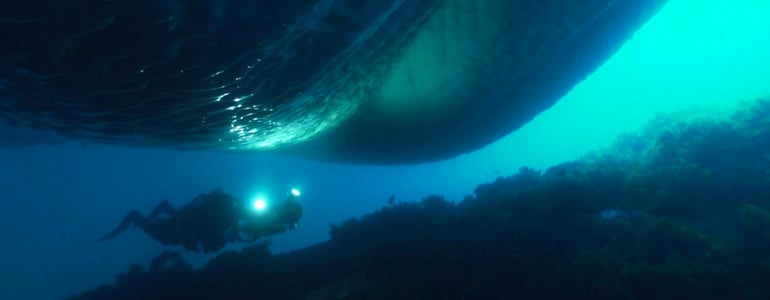
Video: Diving under the ice
For the Under the Pole team journeying up Greenland's west coast, the last few weeks have offered spectacular diving – and some interesting culinary discoveries. Click on the video below to see for yourself.
The French team of explorers and scientists made their way from Uummannaq to Qaanaaq, one of the most northerly villages on earth. Along the way they sampled some local cuisine – guts rolled around skin and fat – and have encountered much wildlife, including various seals and whales. A highlight was a scooter assisted dive under an iceberg.“Navigating the wild coasts is wonderful,” says Ghislain Bardout, expedition chief. “Last month we sailed throughout Melville’s Bay, the least habited and wildest region of Greenland’s West Coast. We would have loved to stay a couple of weeks more in this magic place.” The team are now at Qaanaaq's Bay where they will prepare to hibernate on board their ship, the WHY and spend the winter.
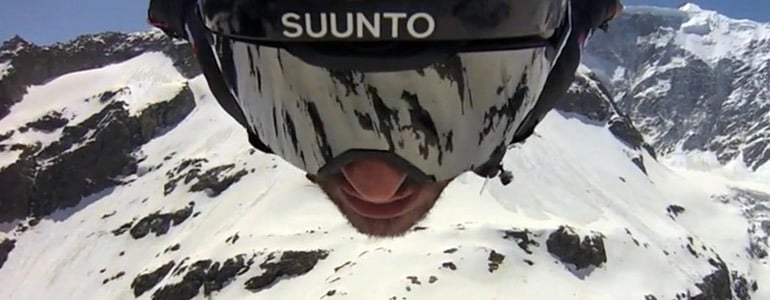
The wingsuit flight you can't miss
This is a wingsuit flight you have to see. Patrick Kerber leaps from the summit of the Ochs at 3,895 m in the Bernese Oberland for a 185 km/h flight in the Swiss Alps.Check out the video and prepare to be inspired. But the jump is only part of the story. This wasn't just an extraordinary BASE jump. This was para-alpinism. To get to the take-off site, Kerber first had to had to climb over the Fiescherhorn (4,049 m). After staying at the Mönchsjoch hut, he and partner Simon Wandeler set off at 4am. “The hardest part was to climb and cross over on the Gross Fiescherhorn. There was lots of ice and snow it took eight hours of climbing to reach the exit point. The jump-off but was covered with a lot of snow,” he adds, “so we had to dig it all out and prepare it for a good push.”What makes the jump unique is that Kerber did not have any external support and BASE jumped with all his gear.“My goal was to approach this project only with my buddy and to fly all the gear that we brought up back down – that meant crampons, ice axe, harness, laser device to measure the jump, karabiners, ice screws etc. All this stuff had to find space in the suit and this is only possible with new pockets that are integrated in the wings.”
He adds: “This is though a big deal when it comes to aerodynamics. So after climbing up for quite some time and also getting tired, you have to make sure that all the technical aspects are correct too or the suit will not fly the right way.” “When you plan a project like this, you can only take and bring the most important gear with you, but also enough to be always safe.”Naturally, that included Kerber's Suunto Ambit2.

A WETSUIT WILL MAKE YOU FASTER
Wetsuits were invented to keep you warm – but they have another positive side effect: they make you faster, too. The buoyancy provided by the suit keeps you in a better swimming position – especially if the swim is your weak spot – and helps save your legs for battle in the cycling and running stages.
Swimmers with competition experience often worry the wetsuit will hinder their range of motion – but that’s a mistake. Tests with and without wetsuits have shown a time saving of five to ten seconds per hundred meters, with wetsuit. Simply put, a full-sleeve suit will help any swimmer go faster.
Like with any athletic gear, fit is important. A suit that’s too big is uncomfortable, slow and cold. Too small and it restricts movement and circulation, making your muscles work harder than they need to. But remember – it’s easier to choose a suit that is too big than one that is too small. Try before you buy, and, if you can, get a swim in. Some triathlon shops have a pool on site, and some teams have events where various suits can be tested.
High-quality wetsuits made specifically for triathlon or long-distance swimming are optimized for buoyancy, fit and range of motion, with different materials in different parts of the suit. A thinner, high-stretch material in arms, shoulders and underarms improves flexibility, while a thicker material in the torso and legs optimizes the swim position.
Top tip? Place your foot in a plastic bag before putting on; it will slide through easily without the risk of tearing the suit.
When choosing tri-ready rubber, don’t forget the transition (T1) after the swim. A zipper for quick and easy removal can shave valuable seconds (or more, if you’re clumsy) off your time! Many athletes also opt to cut a few cm off at the cuffs and ankles to make them easier to remove.
The last thing to remember about wetsuits for triathlons? You can’t always use them. In warm waters, many races don’t allow them (a definite plus for those who are strong swimmers). In the Ironman races, the temperature limit for wearing a suit is 24.5 degrees Celsius (76.1 degrees Fahrenheit) – but generally, temperature limits for wearing wetsuit differ based on the distance and race. So the biggest tip about suits? Make sure they’re allowed before you cross the start line!
Read also Conrad Stoltz’s open water swimming tips
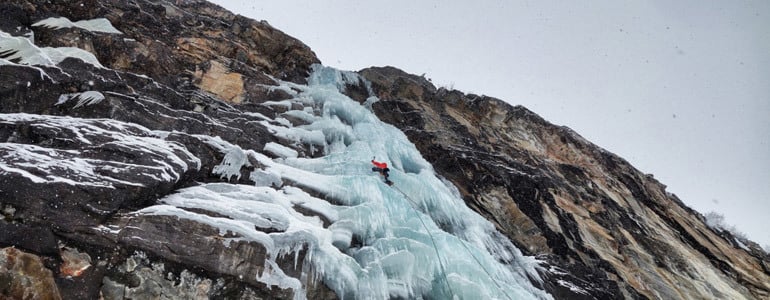
Climbing with Matthias Scherer and Tanja Schmitt
Matthias Scherer and Tanja Schmitt are one of the most unique climbing partnerships around today. The new film Velocity is coming out this month. Below, Matthias introduces us to their world. How did you get started? I stated ice climbing in winter 92. I was all alone on my first climb and I will never forget that day – I knew instantly that I had found my path! Climbing back in those days was very committing due to the equipment – especially the extremely hard to set ice screws. In 1994 I moved to the Chamonix Valley and had many great ice adventures in this tremendous place. For the last 13 years I've climbed now with Tanja. Our ice seasons often start in October and end in April! In that way we have ascended successfully over 500 ice falls. For 10 years we've lived in Cogne in the Aosta valley, one of the best places for water ice climbing in the Alps.What is your philosophy? Full commitment - respect the nature including all beings - be self-responsible - Life in every breath!What is it about ice climbing that is appealing for you?Ice climbing is a true adventure. We love this aspect beside the fascination of the surreal beauty that frozen water creates. And why this form of climbing and not any others?Since I can remember ice and snow had a strong attraction for me and winter was and is for me always the happiest time of the year. In my heart I am a fighter - I want to have fair fights: In ice climbing you can not cheat - there are no bolts to grab or other fixed anchors. You have to find your own way up with your means – all this mixed up with the clear cold air, snow whirling around you and the regularly starts and returns under a wonderful winter night sky – I cannot imagine anything better!
Matthias and Tanja ©Mathhias SchererAre there any memories that stand out?'Kjerrskredkvelven', in Norway, with nearly 1,000m of height and many hard pitches up to WI6, one of the hardest ice falls on the planet. It was definitely a very strong moment for our team! Everything worked out, the crux pitch was for me a real challenge and even when Tanja was hit by falling ice very high up on the climb we motivated each other to go on. Tanja resisted the pain and the cold and she led in the dark the last and very demanding pitch while I took care of the endless descent on Abalakovs. A great day where you can only prevail with a great partner...Any epics?Yeah – many! If you spend up to 90 days in a winter on ice and mixed some misfortunes will happen. Great thing is, that you can be lucky and you can learn. We learned a lot over the past years. Most important: If things get messy, don't get stressed – slow down and do everything double safe – that saved us in a lot of epics!What features of the Ambit do you like?For the approaches especially in Canada the navigation on the Ambit is an absolutely perfect tool. We saved last winter so much time in the dense Canadian forests, not getting lost!
Main image shows Matthias on Repentance, Cogne ©Tanja Schmitt
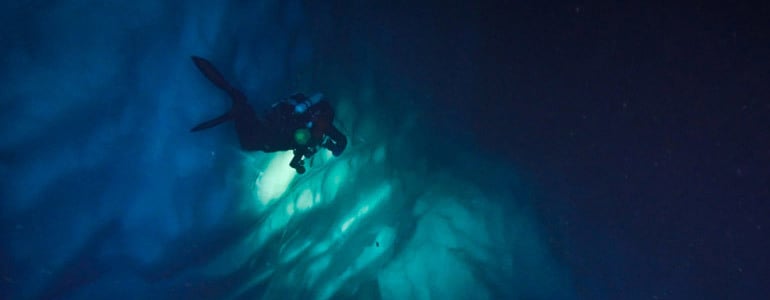
Summer arrives for the Under the Pole team
“Summer arrives, icebergs melt, mosquitoes are everywhere!” So begins the latest newsletter from the Under the Pole team. The expedition, which consists of explorers, scientists and divers, is journeying up the coast of Greenland in a bid to chart the west coast, both from above and below the waterline.
The team set off from France at the beginning of January on the 18m schooner WHY and spent the month of June moored in Ummannaq, which means 'heart shape' in Greenlandic.
All the team on (and in) the ice pack - © Lucas Santucci / Under The PoleThere the team carried out some decompression research. Says Ghislain Bardout: “We performed nine dives with similar profiles (80 m 1hr 30 immersion) which were 'listened' to afterwards via a Doppler device by Julien Hugo, scientist at BF Systèmes and specialist in measuring circulating bubbles concerning diving decompression. “The study is part of a scientific collaboration that aims to create a better understanding of decompression physiology in the arctic environment.”
Suunto dive computers take a rest in between research dives. © Lucas Santucci / Under The PoleAt the time of writing, the team were out of communication, en route to Upernavik and across the famous Melville Bay where they hoped to wait for the arrival of narwhals – tusked whales. The plan is then to head to Qaanaaq where they will over-winter. Main underwater photo: © Ghislain Bardout / Under The Pole
Check out the team's latest webclip here.
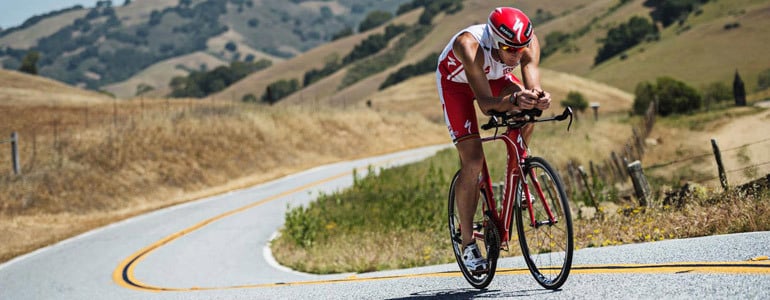
How to win races when you're over 40
Conrad Stoltz is the proof that you don't have to slow-up as you get older. In fact, the XTERRA athlete and former pro triathlete says he's just as fit as he was 20 years ago – and he's regularly beating guys half his age. What's his secret?
“I think it's part scientific training and part experience,” Conrad tells us. “At age 40 my power on the bike is as good, if not better than ever.”
He says this is partly due to the rigorous training program and partnership he has with his coach, Ian Rodger.
“He comes from a Sport Science background where he has done a lot of research and testing on athletes in the lab,” says Conrad. “He lives in Cape Town so we only see each other a handful of times a year but we spend hours and hours communicating via email, skype and text. All of the coaching gets done over the internet. After training I share my workout, and accompany it with a thorough description of how I felt before during and after the session. Ian analyses the data and fine-tunes my training for the next day. So every day is custom made for me.”
“It's very effective,” he adds. “Thanks to that I haven't had any stints of overtraining, under training, or unnecessary injury or sickness.”
It's all a far cry from when Conrad started out as an athlete. “Back then I wanted to train super hard every day, I wanted to race every weekend, and I wanted to win every race! It's simply impossible – I made every mistake in the book, and learned all the lessons first hand. Also, 26 years of triathlon racing – 22 as a pro – has given me a lot of experience and confidence to draw from.”














































































